| Click to set custom HTML | My project just went live on StartSomeGood! Check it out, share with your friends and contribute if you can so I can start some good. We only receive funds if we meet our goal. |
|
6 Comments
Easter in Greece is celebrated on the first Sunday after the full moon of the spring equinox. Although every Greek village has their own customs and traditions, Leonidio definitely has the most special, colourful and luminous celebration of them all.
During the evening of Good Friday, people with candles singing mourning songs follow the Epitaph around the village. The streets of Leonidio are illuminated by thousands of oranges stuffed with candles. The most impressive custom however can be witnessed on the evening of the Resurrection. The mass starts at 11 pm and at midnight “Christ is Risen” is heard from the priest. Shortly thereafter, the sky is filled with thousands of brightly coloured handmade aerostata (“hot air balloons”) that are released by the people with the aim of reaching as close to God as possible. The balloons serve as messengers and are set free to take the prayers and hopes of the Resurrection as high in the sky as possible. The town’s five parishes compete with each other to release as many balloons as possible and keep them airborne for the longest period of time. The sight is nothing short of spectacular. As the balloons ascend to the heavens they begin to look like stars before slowly disappearing one by one. Meanwhile, fireworks add to the whole spectacle and echoes of dynamite explosions reverberate along the cliffs – some of them loud enough to…well lets just say next time I’ll be taking a change of underpants with me! It was going to be the trip of a lifetime - with one small exception. "I've found you a gnome!" the SMS on my mobile phone read. I'd been on the lookout for a ruby cheeked lawn ornament for days, but it was my friend Shona who spotted his long white beard and pointed blue hat in a nearby yard. My heart pounded as I jumped the fence and snatched the little guy. Ripping out a piece of paper, I scribbled an explanatory note. "Dear Mum, Gone travelling. Back soon, Gnome."
My gnome-napping had been inspired by the French film Amelie, in which a widowed father yearns to travel so his daughter sends his garden gnome on a world tour, mailing postcards from every destination. Like Amelie, I was determined to bring a little excitement into the life of a lonely gnome - and hopefully some amusement to his owner. I carefully wrapped Gnome in bubble wrap, packed him into my luggage and headed to Christchurch Airport. Gnome and I were headed on the trip of a lifetime: he'd join me and 19 other students on a ten-day field trip to Antarctica. It sounded like a good idea but as I watched my bag being loaded into the back of a Hercules aircraft, I began to have second thoughts. What if Gnome didn't survive the eight-hour flight? While I was wrapping him up, I'd noticed a large crack running down the entire length of his back. Now, as he lay somewhere beneath the weight of all those bags, I started to fear the worst. But it was too late to turn back as I was instructed to climb into my Extreme Cold Weather clothing for the flight. There was no temperature control on board our Hercules and for safety reasons we had to wear a mountain of clothing, including expedition-weight thermal underwear, polar-fleece pants and jacket, snow goggles, balaclava, a cap with ear flaps, and a down-filled hooded jacket that zips all the way up to your nose. On top of that we also had to wear earmuffs to block out the noise of the engine. The flight was long and when we eventually arrived at the Windless Bight - the site of our field camp for the next ten days - I was anxious to learn of my new friend's fate. I unzipped my bag and to my relief Gnome was peering out through several layers of bubble wrap unscathed. I took a deep breath, knowing I could relax for the next ten days. The following few hours kept us busy though, as we set about erecting 12 polar tents. Shaped like a pyramid, they usually sleep two people, and have been the standard Antarctic exploration shelter for 80 years. Mine was bright orange. Next we had to build the snow walls that would act as toilet doors. Two buckets had been issued between four people to use as toilets - one bucket for "number ones" and the other for "number twos" as you have to separate them. (Luckily, "number twos" freeze too quickly to smell.) Once the buckets were filled they were to be wrapped in large plastic bags, labelled and taken back to NewZealand for disposal along with every piece of rubbish and drop of wastewater we used. When camping in Antarctica, it pays to have a toilet guard to stop fellow campers filling up your buckets. I knew the perfect man for the job! Gnome's humble days as a garden ornament faded into the past Gnome was peering out through several layers of bubble wrap unscathed as he proudly guarded our toilet. By now, people were queuing to take his photograph and even when it snowed, Gnome provided a smile. However, the weather soon took a turn for the worst with a wind-chill factor of -33 degrees. Our tents were quickly covered in snow and we had to tie ropes between them in case we lost sight of our neighbours. Rather than subject Gnome to the biting cold, another student built an igloo just large enough to shelter him. Once the bad weather passed, Gnome and I spent a few days exploring our new surrounds, making the most of the 24-hour sunlight. We went cross-country skiing at 2 a.m., slept in an ice cave and rode bikes along the dirt trails linking the bases. We also climbed Observation Hill -a volcanic cone 230 metres tall that allows you a 360-degree view of snow, ice, and mountains. It was so bright and so beautiful. However, I got the feeling the little guy was a bit homesick, so we made a visit to the United States' McMurdo Station, from which Gnome sent a postcard back home. "Well, I guess you know where I have gone on my adventure!" the postcard read. "I am living in an igloo on the Windless Bight, Ross Island, Antarctica. Although I'm having a great time, I miss you dearly. I'll return soon to watch over your garden. Love, Gnome." After that it was time to pack up Gnome and head back to New Zealand. But my nervous days were over now - considering all that he'd been through, I knew the flight back would be a piece of cake. When we returned from the ice, I kept Gnome in my bedroom for several weeks. He stood proudly on my windowsill and greeted me every afternoon on my return from university. I didn't want to give him back just yet. We'd been through a lot together and I'd grown quite fond of the little guy. Instead, I delivered a letter and photograph of Gnome standing beside his igloo. "I'm back in Christchurch," the letter read. "But will not be home for a couple more weeks . . ." Fifty-two days after his disappearance, I decided to return Gnome to his rightful owner. He had travelled about 6000km with 20 students, four university instructors and three field guides, to the coldest, highest, driest and windiest place on earth. But now the roaming gnome was coming home. In the daylight Gnome's home looked like Noddy's place in Toyland. The walls were cream with yellow trim while the roof and gutters were a brilliant red. Even the flowers matched the colours of the house. Everywhere I looked, garden gnomes were smiling at me. As much as Gnome enjoyed his Antarctic adventure, I knew this was where he belonged - at least until my next trip. Greece’s revered Mt Athos is the oldest monastic republic in existence – and quite possibly the world’s biggest men’s club. Resident monks may call Mount Athos the ‘Garden of the Virgin Mary and Mother of God’ but that doesn’t mean women may step on its sacred soil. As they were through the politically incorrect Ages, women remain barred.
I decided to visit the World Heritage Site for myself. Cut off from the outside world, Mount Athos proper is accessible only by boat. From Ouranoupolis, it’s a three-hour ferry service to Daphne, the peninsula’s main port. Making the trip with me is a mixed group of men; fathers with sons, returning monks and the occasional solo pilgrim. Nearing port, the impressive 2033-metre marble summit of Mount Athos floats into view, crowned by a lone white cloud and sporting several snow patches. The stark white limestone pyramid rises sharply from the sea-battered southern tip of the peninsula, attracting not only men of God but climbers, too. At first glance Daphne appears as a regular Greek fishing town: a post office, a police station, a tacky souvenir shop, a card phone, a taverna and a customs station where departing pilgrims are subjected to a customs inspection. Behind Daphne, stretching along the coast to the unseen are stone pathways that track through thickly wooded slopes. Centuries-old buildings make the mountain a living museum of Byzantine art, both in its monastic architecture and the masterpieces protectively guarded within. After lunch in Daphne, I board the Aghia Anna ferry service to the first of the southern monasteries, Simonos Petra (Rock of Simon). Built in the beginning of the 14th century it is one of the oldest high-rise buildings on the peninsula. From the ‘arsanas’ or seaport I make the sweaty climb to the monastery, which sprouts from a precipitous rock like a fortified castle. Standing on creaky wooden balconies that surround the top floors of the seven-storey structure, monks can be seen toiling in the terraced gardens below. Work, prayer and contemplation consume the entirety of each monk’s day. Footpaths rather than roads link the monasteries. Another hour of walking leads me to the door of Gregoriou, the only monastery to be built virtually at sea level. From here, it is an hour and a half to Dionysiou and a bed for the night. Dionysiou perches defensively atop a coastal cliff. Entry to the monastery is through two heavy wooden gates lined on the inside with long iron rods and on the outside with big metal plates. The Gatekeeper - whose job is to lock the gates at sunset and open them at sunrise - is nowhere to be seen. He is also supposed to check visitor permits and accompany them to the guesthouse, so I wait anxiously on a wooden bench in the main courtyard. Finally, the guest master shows up and leads me off to the guesthouse. At present, he explains, everyone is at Vespers, an important choral service usually sung towards the end of the afternoon in the main church. The church bells ring immediately after Vespers, marking time to eat. Monks gather in the main courtyard outside the richly adorned refectory. The first to enter is the Abbot followed by monks and lastly pilgrims. I stand with other pilgrims behind a long table separate to the monks. A small bell sounds and we sit in silence to eat a plain and frugal meal of lentil soup and bread. After dusk, the Abbot leads his charges to the main church for the Compline, another worship service. Dimly lit by candles and oil lamps the church is alive with the shadows of monks shuffling to their seats and then their chanting. Incense sweetens the air, adding a tangible blanket of ancient mysticism. Early the following morning pilgrims file silently to a room where a modest breakfast offering of bread, olives and tea is served on the guesthouse balcony. A fellow pilgrim solemnly informs me that I missed the 4am morning service. An hour’s hike from Dionysiou, the Monastery of Saint Paul provides a port for a ferry to the sketae (smaller community) of Kavsokalyvia, often referred to as the “Athos Desert”. This region features some of the peninsula’s wildest landscape. Besides walking, mules are the only means of transport here. Not even the ferry continues past Kavsokalyvia. Unlike enclosed monasteries, sketae resemble small Greek villages with a group of ‘huts’ clustered around the large common church. Of the thirteen sketae’s on Mt Athos, Kavsokalyvia is most renowned for producing exquisite hagiography, woodcarving, miniature art and incense. Walking into the village, a man in plain clothes offers a Loukoumi (Turkish delight) and a shot of raki (home made ouzo). “To help control sweating,” he assures me as I wash the raki down with a cup of Greek coffee. An ex-criminal with a dark past, my host Vasilis has lived at the sketae for three months in an attempt to detox his body and mind. He believes the solitude and quiet make it the perfect place for prayer and contemplation, free from external influences. Even so, Vasilis complains about the peninsula’s commercialisation and the encroachment of the outside world. “There never used to be telephones or electricity here,” he explains. Vasilis’s face hardens and his gaze intensifies as he leans forward, “The Devil is in the refrigerator.” Another shot of raki is in order. While continuing the conversation, we wait for Father Simeon, the sketae’s senior monk, to arrive. He eventually enters carrying freshly picked salad, the reward of a long afternoon farming. Sitting around a rustic wooden table the talk is of Father Simeon’s path to monk-hood. “When I was 17, I was into girls, drinking and smoking,” says Simeon who grew up as an ordinary teenage boy in Athens. He was fit and active, diving for sponges to finance his habits. Then a sudden and unexplained illness struck. “After years of being confined to a bed, I decided I had to either start living again or put a gun to my head.” That night, he prayed to God in a last ditch attempt to save himself. The following morning, Simeon shocked his family by rising from his bed. During the night, he says he experienced an apocalypse of Jesus Christ; the first of many for Father Simeon. Increasingly frequent visions eventually brought him to Mount Athos, where he has been a monk for over 30 years. “It is here I have learnt the true meaning of happiness.” I travel on to the Monastery of Gregoriou, regarded as one of the friendliest, most gracious monasteries and an excellent place to gain a better understanding of Orthodoxy culture. Monks here are happy to discuss liturgical rhythm – the foundation of the religious life – until the hour of darkness marking time for silence and prayer. At 4am the next morning, another bout of prayer is called for by a wandering monk rhythmically striking a wooden plank with a mallet. No excuses this time! At morning service I meet Gert, a young German training to be a monk who confides that his parents think he is studying at university. For the next four hours, we sit and listen to monotone chanting, standing only when a priest sweeps pass to give us his blessing. Monks enter and depart at random, most pausing to kiss the religious icons or the frescoes. Leaving the monastery I spy two clocks hanging in the entrance. Gregoriou, like most monasteries on Mt Athos, runs according to Byzantine time, which starts the clock for each new day at sunset. In the current season, Byzantine time is four hours ahead of Greek local time. To further complicate things, the entire mountain still follows the Julian calendar and is therefore thirteen days behind the rest of the world. It’s yet another reminder that a journey to Mount Athos is truly a journey back in time. I woke up on Wednesday to some very exciting news. I have been shortlisted for one of the Best Jobs in the World!!! From over 600K applicants and 45,000 videos, my entry is one of 25 still in the running for the job of Park Ranger in Queensland. Wanna see my application video? Visit Tourism Australia's Shortlisted Application Gallery or watch it on my YouTube channel below. You can follow my progress here over the coming few weeks:) Thanks for coming to my site! Please, say G'day by leaving me a comment to let me know what you think!
|
Say G'day to Lloyd GodsonLloyd Godson is an Australian Marine Edutainer, Aquanaut and Adventurer. Say G'day by leaving him a comment on one of his Blog posts. Archives
September 2013
Categories |
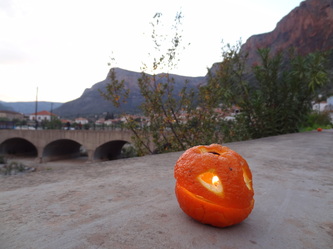





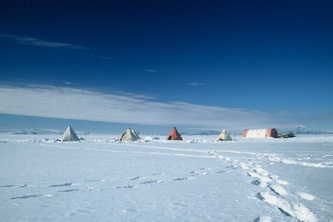


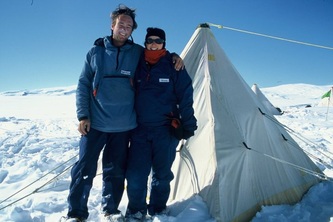


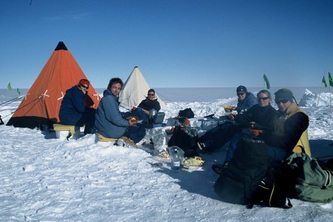

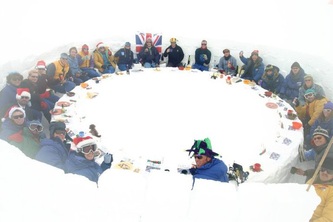

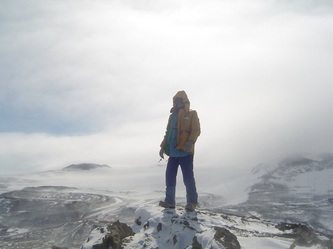
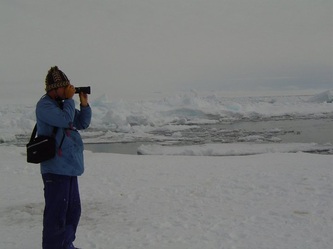


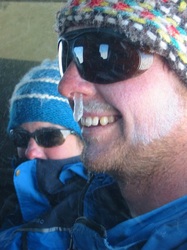

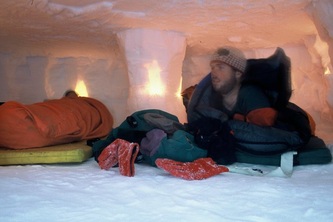



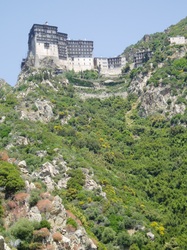


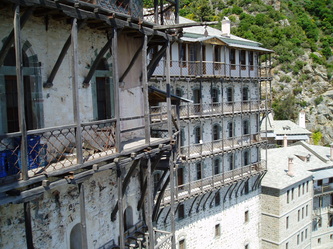
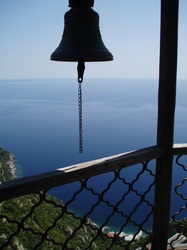







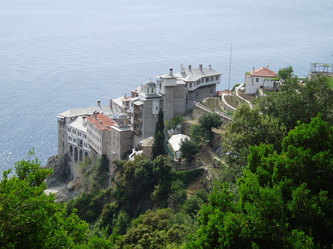


 RSS Feed
RSS Feed
